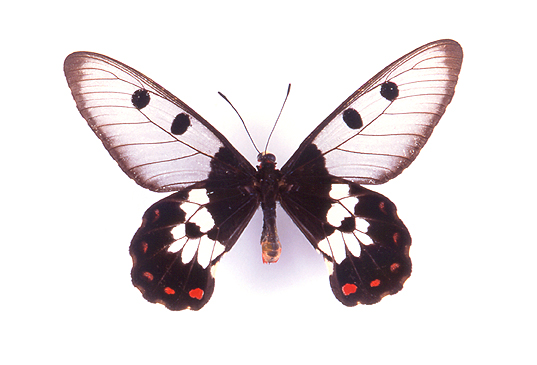Clearwing Swallowtail Butterfly (Cressida cressida)
Pricing: Dead (spread, as pictured): $45
Geographic Range: Australia & New Guinea
View: Top Sex: Male

Image Copyright 2003
Barbara Strnadova
Cressida cressida is the only member of its genus. The males are much more brightly colored than the females as the females tend to loose most of their scales, making them almost entirely transparent. The scales on the wings of Cressida cressida are not attached very securely and soon after the adults emerge from their chrysalides the scales begin to fall off. Initially the forewings of the males are white but as the scales fall off a transparent patch develops. Eggs are yellow, spherical, and ribbed, with a diameter of about 0.5 mm. Females lay eggs on various species of Aristolochia, including A. chalmersii, A. holtzei, A. pubera, A. tagala, and A. thozetii. In Australia they will lay eggs the introduced Dutchman's Pipe (Aristolochia elegans) but these eggs will not survive unless the larvae feed exclusively on its flowers. Larvae are covered in tubercles and mottled with dark brown and white. Pupae are brown with white markings and are about 2.5 cm in length. Although Cressida cressida mimics other poisonous swallowtail butterflies it too is poisonous in its own right. Three subspecies have been recognized: C. c. cressida which ranges from Cape York to Sydney, Thurday Is., Tanimbar Is., Babar, and Leti Is.; C. c. cassandra from the Northern Territory, and C. c. troilus from Papua New Guinea.
